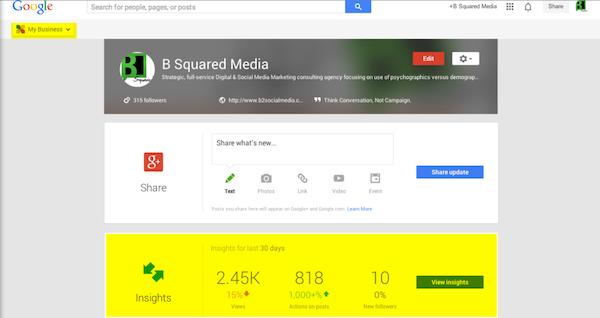Why The Post And Pray Method Doesn’t Work (And What To Do Instead)
I did a Google Search of “post and pray method” hoping to find some witty definition, but apparently the staffing industry has cornered the market (or at least the search market) on that phrase.
So I’ll have to take a stab at my own (hopefully witty) definition:
“The post and pray method is a favorite method of social media “gurus,” “ninjas,” and “mavens” whereby they don’t follow any sort of organized structure or content calendar for publishing posts to social media, and instead find cat memes or take quotes (from other authors) and make them “pretty” in Canva. These “experts” then post them, and pray the post(s) get interaction and engagement. In short, this method requires little to no social media or business strategy.”
Table of Contents
WHY THE POST & PRAY METHOD DOESN’T WORK
Like any other business or marketing initiative, social media also requires a strategy. As I mentioned in, “What You Absolutely Need To Know About Content Marketing,” everything should start with your why. Without it, you’re risking running askew of the C-Suite (or whoever you answer to).
Besides that, the “spray and pray” method has been shown to “yield lower response rates and hurt your brand.”
Ideal content — especially social content — is specifically created with your target audiences in mind. And beyond that, it should fall into one of three categories:
- Top of the funnel
- Middle of funnel
- Bottom of the funnel
Let’s break those down for a better look at a content strategy.
Top Of The Funnel
Your would-be customer knows they have a problem. They’re looking to fix it. YOU should be looking to fix for them by offering:
- Free tips/tricks
- Free cheat sheets/guides
- Free checklists
- Free whitepapers
- Free eBooks
- Free videos
Middle Of The Funnel
Your would-be customer (now prospect) recognizes that you have a solution for their problem(s).YOU should be qualifying yourself as the go-to company/consultant/person to buy from with:
- Free webinars
- Case studies
- Freemium service or free trial/sample
- FAQs
- Customer testimonials
- Product or service collateral
Bottom Of The Funnel
Your would-be customer is ready to purchase. YOU help them make the purchase with you by offering:
- Free trial/sample/demo
- Free consultation
- Estimates/quotes/proposals
- Coupons or specials
Keep in mind that today the funnel is a little less linear and that consumers can enter from the top, bottom or sides – all you need to focus on is having the content available to them no matter where they are in the buying pattern.
By looking at each of above funnel examples, you should be able to create plenty of long-form content for your blog, eBooks, or other downloadable pieces. And from there you should be taking snackable bites of tips, tricks and helpful content to place on your social platforms.
Sooooo, I can see about 16 reasons you shouldn’t EVER have to use the post and pray method.
WHAT TO POST
Furthermore, there are other places you can look to see what kind of content you can post for your social audiences. And there’s no praying needed since these tactics show you the tried-and-true data.
**Click on photos below for larger views.
Check your Facebook Insights for three main things:
- Under Posts, then Post Types: You’ll see the Average Reach and Average Engagement for each type of post you typically use on your page (in my example below, they’re Links, Status (text-only posts), and Photo). For my report you can see that while link posts (true to recent reports) are given more Reach by Facebook, Photo posts still get the most Post Clicks, Likes, Comments and Shares.
- Under Posts, Post Types: Scroll down to All Posts Published and reconfigure your report to show you the best posts by Engagement (you can do this by clicking on Engagement in the menu and choosing Post Clicks or Likes, Comments & Shares). Here you can see that personal, branded, and behind-the-scenes content does best for us (for the date range given), and that the majority of those posts were photos. This info can help us carefully choose content that gets engagement (no praying required!) moving forward.
- Under Posts, When Your Fans Are Online: This is one place we like to check every week to ensure we’re posting our snackable bites at the best time possible. Why “post and pray” with the times of your post when Facebook tells you when the majority of your fans are online?! As our example from the B Squared Media Facebook Page shows, the best timeframe is between 10AM-4PM EST — but we can get even more specific than that (and do!).
For Twitter, we use Sprout Social to show us our best times to tweet (based on clicks). I know that’s not helpful if you’re not a Sprout user, so here’s a super post from Buffer on four ways you can find your best tweet times.
We also perform monthly (sometimes weekly) click audits to help us learn which content and hashtags are performing best.
Google Plus
Similarly, we use Sprout Social to configure our best times to post to G+. But you can also try Timing+, which takes a look at your last 100 G+ posts and gives you an optimal time for publishing your content.
You can also sign into your Google Plus Page, switch to My Business, and view all of your Insights for your Page.
They’re similar to Facebook Insights and are broken down by Visibility, Engagement, Audience, and Platform.
CircleCount is another cool tool to try.
LinkedIn, Instagram & Others
With sites that are harder to understand (no Insights, or API reporting) we usually track and monitor our stats within a custom Excel file (yet another reason to have a content calendar and publishing schedule!), and/or perform monthly click audits.
10 STEPS FOR POSTING WITH CONFIDENCE
By using the data on your social audiences you can — and should! — post with confidence. There’s no reason to rely on kitty cats, memes, and over-used quotes.
There’s no reason you can’t share some of your own original content to help would-be customers make their way through your sales funnel.
Follow these 10 steps to throw the post and pray method in the trash (where it belongs … PU!):
- Know your business strategy & goals
- Know your marketing strategy & goals
- Engage in Content Marketing (create original content to nurture leads through your funnel/pipeline)
- Create your social strategy & goals (tie into biz and marketing goals)
- Break your original content down into snackable bites and place on social media sites
- Create a content calendar or publishing schedule to manage content and keep on track
- Use behind-the-scenes elements along with storytelling to humanize your brand
- Review Insights and other metrics weekly or monthly to review, refresh and recycle content
- Look for holes in your funnel and repeat steps 3-8
- Be consistent!
Is this complicated? NO. Does it take time and talent. Heck yeah! If you can’t do it yourself I encourage you to look outside your company and outsource your social media efforts (hint, hint, wink, wink!).
Yes, posting is fluid and not written in stone, but the post and pray method isn’t being fluid – it’s being lazy, or flat out not knowing what you’re doing. And that’s a fact, jack!
Do you agree or disagree? Let me know in the comments section below!
See you in the social sphere!
Want more tips like this? Click here to get our newsletter, The Social Swag, delivered straight to your inbox each month.
About the Author: Brooke Ballard

Founder & Chief Digital Strategist at B Squared Media, LLC
Like many of you, Chief Digital Strategist and Founder of B Squared Media, Brooke Ballard, has seen a fundamental shift in business due to social media. How do businesses take advantage of this? Where do they start? Is social media for everyone? In-the-trenches online media experience helps B Squared Media answer these questions for companies seeking to formulate successful social strategies. Using tactics developed in her yearlong honors thesis study, Brooke helps bright and innovative entities develop social strategies around content, community, conversation, collaboration, and conversion. Simply put: Think Conversation, Not Campaign.™
Join me on www.b2onlinemedia.com




